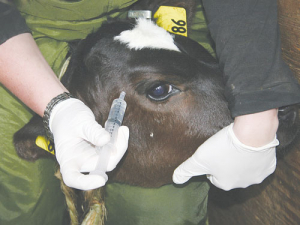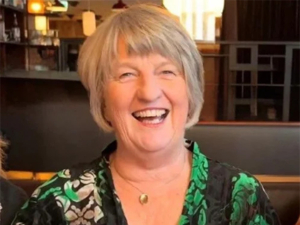Farmers try to protect animals and people by preventing horn growth by removing the horn buds when the calf is one to six weeks old.
According to DairyNZ, it’s important to use pain relief as disbudding and dehorning can be painful.
Early disbudding is better for both the calf and the operator. It is best to remove horn buds before six weeks of age, when the horns are still small and have not yet attached to the skull.
Most farmers wait until the calf is at least a week old to disbud, when calves are usually robust, have passed the greatest risk period for scours and the horn bud is easily felt.
To administer local anaesthetic and apply the hot iron, calves will need to be restrained to disbud safely and accurately. This may be in a purpose-designed disbudding crate or in a head bail.
Another option for restraint is sedation, which can only be done by a vet. Sedation results in low stress disbudding for calves and handlers, and is ideal when other options for restraint are inadequate.
There are many benefits of using pain relief, including:
- less pain and stress for the calf
- reduced growth check
- reach weaning weight sooner
- faster recovery
- the calf is easier to handle during disbudding.
As a minimum, local anaesthetic should be used in disbudding, which numbs the horn bud for several hours. Using an anti-inflammatory also will provide longer term pain relief for the calf.
All methods of disbudding require pain relief.
Hot iron cautery is the most effective method used to disbud calves and is used by 97% of farmers. Calves should be disbudded by hot iron between one and six weeks old.
Caustic paste is not recommended as it can spread into the eyes or onto other calves, causing painful burns.
Scoop/amputation should not be used as it leaves a large open wound with risk of bleeding, infection and disease.
Dehorning of older animals should be avoided by disbudding them as young calves. However, if animals are purchased with horns or if a horn re-grows and dehorning is required, pain relief should be used and in fact must be used on animals over nine months old.
Tipping (removal of the insensitive sharp end of the horn) is not dehorning. However, the length of the insensitive tip is variable and it isn’t obvious. There is risk of accidentally cutting through and exposing the living tissue. If this happens you have dehorned the animal, and if you haven’t used pain relief then you will be breaching welfare minimum standards.
Animals can only be tipped once, as after the first tipping the sensitive tissue of the horn is usually very close to the end of the horn. Tipping also does little to reduce the disadvantages.









